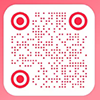Specific Solutions
How to Excel in Sports Translation?|Elite Translation Industry Practice Guide
As sports become increasingly globalized and international competitions are broadcast around the world, sports translation is no longer just about converting words. It plays a vital role in event coverage, brand communication, cultural exchange, and audience engagement.
From the Olympics, World Cup, Asian Games, and continental professional leagues to global brand campaigns and multilingual live commentary, high-quality sports translation is the bridge to worldwide fan connection and market expansion.
So, how can sports translation be done well? Here are five key pillars that define excellence in this field.
1. Mastering Technical Terminology
Accuracy is paramount in sports translation, especially when handling:
Game rules and mechanics (e.g. “illegal attack,” “red card,” “baton drop”)
Match phases (e.g. “group stage,” “extra time,” “penalty shootout”)
Performance stats (e.g. “steal,” “assist,” “conversion rate,” “goal difference”)
Equipment and movement terminology (e.g. “pole vault,” “720 spin,” “round-based system”)
A skilled sports translator should have a solid glossary across multiple sports disciplines and always use officially recognized equivalents rather than colloquial or improvised terms.
2. Delivering Rhythm and Impact
Sports content needs to be accurate and energetic.
Whether translating match commentary, post-game recaps, or video subtitles, the language should embody:
Rhythm: Use short, punchy sentences that match the pace of the sport
Emotion: Convey excitement, tension, or disappointment aligned with gameplay
Tone: Be flexible—conversational, technical, dramatic—depending on platform and audience
Note: Subtitling must sync with visuals, while written reporting must balance speed with accuracy.
3. Understanding Sports Culture and Audience Expectations
Sports are universal—but cultural expressions vary.
For example:
Overseas fans may not understand terms like “Chinese table tennis dominance” or “dream diving team”
Phrases such as “killer goal” or “crushed the opponent” may require tone adjustments in formal contexts
Terms related to home/away matches, fan slang, and intensity must respect local conventions
Great sports translators are also cultural mediators—ensuring meaning is both clear and relatable.
4. Adapting to Diverse Translation Scenarios
Sports translation spans multiple formats and settings, including:
Live subtitling and interpretation for televised events
Post-match interviews and press conferences
Brand content: marketing slogans, announcements, sponsorship materials
Technical documentation: referee guidelines, event manuals
Social media localization: hashtags, memes, graphics, fan interaction
Subtitling for sports films and documentaries
Each of these scenarios requires different skills in language, formatting, tone, and delivery speed.
5. Ensuring Workflow Efficiency and Quality Control
To meet the demands of fast-paced events, a capable sports translation provider must have:
Rapid response workflows with 24/7 availability
Bilingual editing and terminology management systems
Platform-ready delivery (e.g. subtitle files, social post formatting)
Multilingual coordination for major international competitions (e.g. EN–ZH, EN–ES, EN–FR)
Conclusion
Sports translation is a dynamic blend of language, speed, culture, emotion, and technology. It gives voice to every goal, every record, and every story behind the game.
If you're seeking a professional partner to support your sports content, live events, or brand expansion, Elite Translation is here to bring your message to life in every language—and every stadium.


















